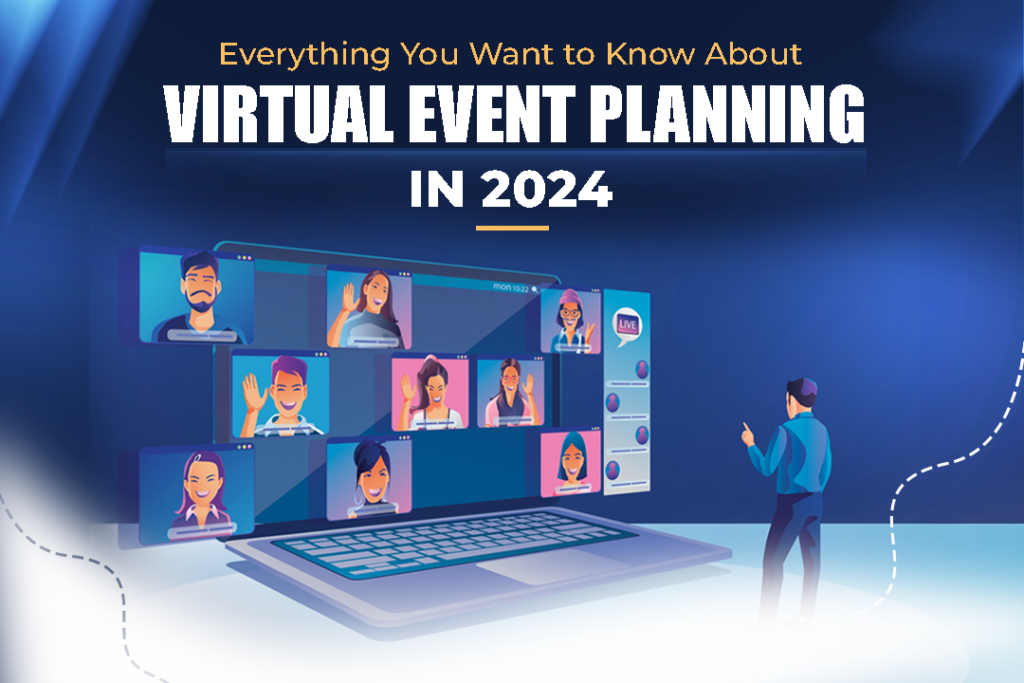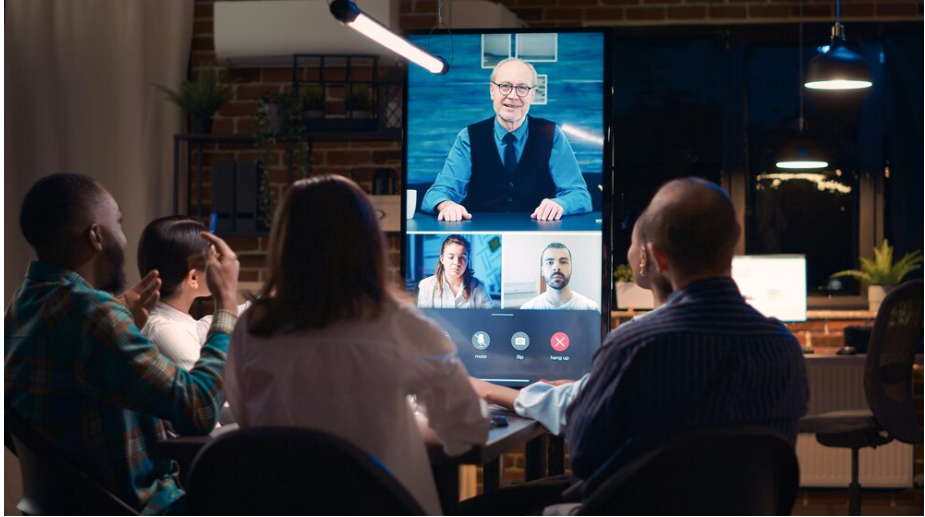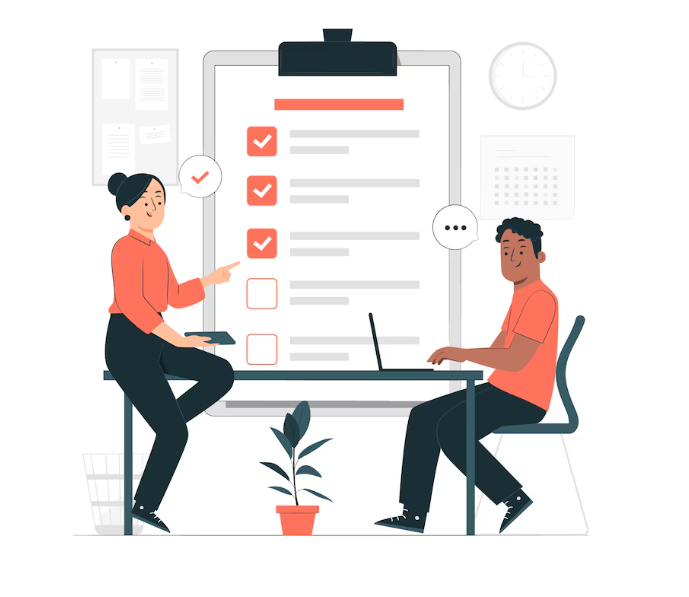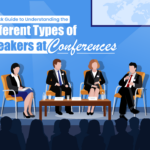
Virtual events have proven to yield excellent ROI. They can help drastically reduce your event budget, save time, and increase marketing qualified leads (MQLs). Because of their profitability, 93% of marketers plan to invest in virtual events in the future, which means more money for you.
However, planning a virtual event is no easier than planning a physical one. To create the best attendee experience, you must cross all the Ts, dot the Is, and everything in between. This includes marketing your event to the right audience, creating an enjoyable and valuable experience for them, and, most importantly, boosting event sales.
If you’re unsure how to plan your virtual event from start to finish, don’t worry! In this article, we’ll cover some steps you can mirror for success.
What is a Virtual Event?
You may have attended a webinar, participated in virtual networking events, or streamed your favorite sport from your device and at your convenience. That’s the beauty of virtual events. They provide a convenient way to attend an event anywhere worldwide.

Pic Courtesy: Freepik
A virtual event enables people from different locations to connect and interact on digital platforms. Unlike a traditional in-person event, this type eliminates set-up costs and accessibility constraints by providing a platform where people can interact from anywhere worldwide, provided they have access to the Internet.
Virtual events take different forms and scopes, from smaller in-house meetings to larger virtual conferences. Recording a virtual event is easy so attendees can rewatch the meeting anytime. We’ll cover this in detail in the next section.
Types of Virtual Events
Just as we pointed out above, there are different types of virtual events to choose from. Understanding what each entails can help you pick the best for your first virtual event. The popular types are:
1. Webinars
Webinars, short for web seminars, are the most common type of virtual event. They are often educational and allow presenters to share information with their audience in real-time via video. You’ll usually find interactive elements like Q&A sessions, polls, live chats, and visual aids like slideshows.

2. Virtual Conferences & Summits
These are much longer than webinars, spanning several days and packed with various sessions and activities. Virtual conferences feature keynote speakers, breakout sessions, panel discussions, and networking opportunities like traditional in-person conferences. The participants can engage in interactive workshops, network with industry leaders and attendees, or explore the virtual exhibitor booths.
3. Hybrid Events
Hybrid events combine the best of virtual and physical events. They allow you to reach a broader audience by simultaneously accommodating in-person and virtual attendees. This allows for better participation, greater reach, and, more importantly, access to vital business data to inform your campaigns.
4. Virtual Exhibitions
Virtual exhibitions or trade shows are perfect for product launches. They provide an excellent opportunity for businesses to showcase and sell their latest releases to a global audience without the constraints of a physical space.
5. Virtual Town Halls
Do you want to make your remote team members or employees feel like active contributors to the company’s growth? Hosting a virtual town hall meeting is the perfect solution. Companies host this event to nurture a healthy culture among remote teams. They also allow employees to air their concerns, share updates with stakeholders, and connect with other staff.
Why Host a Virtual Event?
There’s no doubt – virtual events have come to stay.
Since its debut in the ’90s and mainstream adoption during the COVID-19 pandemic, virtual events have transformed how people connect, learn, and interact. Market analysts forecast a 19.5% growth in virtual events over the next eight years. As an event planner, you’re leaving money on the table if you’ve not yet included virtual event planning in your event management services.

Considering the benefits, it’s not so hard to see why.
i) Virtual events are more cost-effective than hosting physical meetings. You don’t have to worry about travel costs, catering expenses, finding and paying for venues, or accommodation costs for your invitees.
You only need an internet connection, a video conferencing tool, and an excellent virtual event management platform to do the heavy lifting. As an event planner, you’re leaving much money on the table if you haven’t included this in your event management services.
ii) It’s also a win-win for the attendees. They don’t have to travel or deal with traffic as they do with on-site events. This makes virtual events a more accessible, flexible, and inclusive option for all. Moreover, the convenience of attending from any location allows for a higher participation rate and the ability to attract new markets interested in your event.
iii) Virtual events give you rich customer insights. For example, you can use interactive polls, quizzes, or surveys to collect vital data on your attendees, such as location, interests, sessions attended, engagement levels, etc. This data can inform future events or run targeted ads for specific audience segments, improving the conversion rate.
Step-by-Step Process of Planning a Virtual Event
Here are some steps to follow when it comes to virtual event planning:
1. Don’t Assume. Research your Target Audience
The success of your virtual event depends on your audience. Before flagging off, clearly define who you’re targeting, their challenges, goals, and what is ‘valuable’ to them.

Pic Courtesy: Freepik
No matter how long you have been in the event industry, don’t try to make assumptions about who they are or what they need. Instead, conduct thorough research using polls and surveys via emails or social media channels to gather insights into their demographics, interests, and behaviors.
For example, you can ask questions like:
- What are you hoping to get from this event?
- How do you plan to participate in this event?
- Do you have stable internet connectivity?
- How did you hear about the event?
You can also look into similar events to see who your competitors are targeting. This research can help you decide what topics to cover in your event, the best time to host it, and the speakers you should invite.
Tip: Use Eventible’s B2B speaker directory – Gazebo – to find top-rated speakers and influencers in your industry.
2. Craft a Virtual Event Strategy
Your virtual event strategy should include the event agenda, keynote speakers, panel discussions, facilitators, budget, goals, etc.
The first step is defining the purpose of your event. What are you looking to achieve? Conversion, brand awareness, or fundraising? Understand that your goals are the focal point of your event. This will help you set key performance indicators (KPIs), track relevant metrics, and avoid steering off course.
Also, you need to factor in what your audience wants to gain from the event. This could be entertainment, connecting with like-minded people, gaining insights on a subject, or a combination of the three.
Another vital thing to consider is your virtual event format—the one your audience will most likely engage with. For example, consider hosting webinars or virtual summits if your audience comprises industry professionals seeking in-depth insights on a subject.
Tip: Strive to simulate the human feel of real-life events in your virtual events. This helps to retain your audience’s attention throughout the event. This brings us to the next.
3. Build-in Interactivity. Less Formality, More Intimacy Wins
You’ll agree that keeping an average human engaged in on-site events isn’t easy. It’s even more difficult in the digital space. When you host events online, you compete against device notifications, distractions at home, or the temptation to multitask. This is why you must build interactive measures for your event.
To do this, incorporate interactive elements such as polls, chats, emojis, or Q&A features. You can even use gamification features to host game-based challenges during your event.

Pic Courtesy: Freepik
An interesting use case is how YourMembership, a cloud-based software service, used event gamification to drive user engagement and ramp up app downloads during one of its virtual conferences. They hosted a pre-event challenge where attendees had to download a game, Triwizard, on their devices.
The attendees were given a set of objectives and awarded points once they achieved them. At the end of the campaign, 88% of the attendees downloaded the app, and over 11,000 game points were awarded compared to the previous year.
Tip: Keep your events pegged at 2 hours or less. If you plan to go longer than this, consider spreading your events over multiple days.
4. Advertise and Promote Your Event Before, During, and After
Effective promotion is crucial to the success of your event. Unless you’re planning a virtual town hall event, there’s no reason not to promote your event actively across channels. The best time to promote is before, during, and after your event.
For pre-event promotions, leverage social media channels to reach more people. Social media is a powerful tool — housing over 65% of the global population. So, cast your nets wide by:
- Using captivating visuals and persuasive copies in your posts, alongside a registration link to your event
- Run targeted paid campaigns for even wider reach.
- Partner with industry leaders or influencers to expand your reach.
- Have a user-friendly and well-designed landing page encouraging people to register for your event.
- Run email marketing campaigns detailing the vitals of your event and push ticket sales.
During the event, there’s still an opportunity to boost user participation and create ‘FOMO’ for those who couldn’t make it to the event:
- Share highlights on social media using event hashtags and branded visuals. You can also encourage attendees to share their takeaways using these hashtags.
- Encourage attendees to share their key takeaways and experiences on social media using hashtags.
- Offer sneak peeks such as backstage interviews with speakers or access to exclusive giveaways.
Your marketing doesn’t end after the last session. Here:
- Share the pre-recorded sessions and highlights of the event on social media to reach those who couldn’t attend the live sessions.
- Send a personalized ‘thank you’ email to all the attendees and a ‘we miss you’ to those who missed the event.
- Add polls or surveys in your emails to collect data on your event. You can even share the results from the surveys on social media to showcase the success of your event.
Read more: 17 Ways To Promote Your Next Event.
5. Choose the Right Event Management Technology
Virtual events rely on technology. This means the success of your event depends on the type of virtual event platform you choose. So, consider a platform that offers built-in features such as live streaming, audience engagement tools, and data analytics. Overall, look out for the one with:
- Customizable online event pages that enable you to create and sell tickets
- Compatibility with a wide range of video conferencing tools such as Zoom, Vimeo, etc
- In-built marketing and user-engagement tools.
- Live streaming features.
- User engagement tools.
All-in-one event management platforms like Eventbrite, Whova, Cvent, VFairs, and the like offer many virtual tools for easy planning and management. With these platforms, you can create and sell event tickets, expand your reach using integrated email and social marketing tools, and even get access to detailed analytics and reporting for future optimizations.
6. Prepare for Hiccups
Even with meticulous planning, unforeseen issues can occur during a virtual event. Once this happens, it’s almost impossible to regain all your participants. This is why you should always test everything beforehand and have a strategy when things go wrong.
To do this:
- Do a dry run with your team, speakers, and (or) hosts to test your tech stack. Evaluate their technical needs, including the cameras, microphones, lighting, laptop, etc.
- Have a dedicated technical support team on standby to remedy issues as they occur.
- Make at least one backup item available in your tech stack.
- Double-check the virtual event settings on your event planning software.
- Consider using multiple streaming platforms to enable your audience to use their preferred platform.
7. Keep an Eye on the Data
When it comes to data, virtual events are a step ahead of the traditional on-site ones. You can gain valuable insights into your event success by tracking metrics such as:
- Number of registrants and their demographic data
- Session registration, ratings, and feedback
- Number of leads
- Buying interests
- The email is open, and you can click through rates, etc.
Virtual Event Planning Checklist
This checklist isn’t exhaustive but covers the essentials for planning your virtual event.

- Set specific, measurable, attainable, relevant, and timely SMART goals for your virtual event. These goals should align with your overall business goals. Set KPIs (key performance indicators) to track metrics after your event.
- Define your target audience and the number you expect to grace the event. How many are you expecting? Dig into your persona to identify the segment most likely to benefit from your event.
- Design your event. Create branded event assets such as graphics and copy for social media and email adverts, slides for the big day, etc.
- Draft an event sitemap before the event. Assign roles to the host & co-hosts, panelists, break-out room moderators, and technical support.
- Choose a topic that immediately conveys value to your target audience.
- Ensure that the date(s) doesn’t conflict with holidays or other significant events in your sponsor(s), speaker(s) or attendees location. Opt for one that would be convenient for most.
- Build a robust promotional plan. It should include informative articles, attention-grabbing social media visuals, press releases, hashtags, sponsored ads, etc.
- Think about incentives. This can be educational resources such as eBooks or monetary prizes such as gift cards or coupon codes.
- Set up a seamless registration process. Provide clear information for the attendees on registering and accessing the event platform.
- Send thank you emails to all event participants, including sponsors, speakers, and attendees. Personalize the emails and include relevant CTAs, such as discounts on products/services, event materials, etc.
- Use virtual event technology to consolidate all your planning in one place and ensure the success of your event.
- Have a budget that covers all the items on your list, including the virtual event platform, sponsor enablement, honorariums (or speaker fees), etc.
Key Takeaway
Don’t waste time trying to whip up the perfect virtual event strategy – it doesn’t exist! Whether virtual or physical, success in the event industry stems from understanding your audience, their interests, and how you can provide them with an authentic, valuable experience.
Luckily, at Eventible, we contribute to your event success by providing a platform where you can easily find attendees and speakers for your next event in seconds. We also have built-in DIY tools that allow you to collect feedback (video, audio, and texts) from attendees and sponsors in one click. These reviews can be used as social proof or user-generated content (UGC) to drive conversions for future events.




Comments are closed.